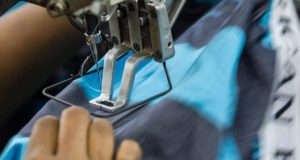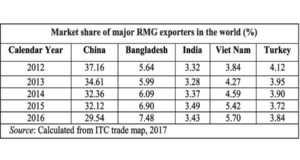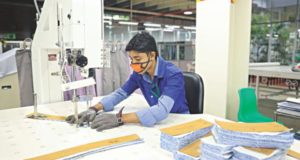For Bangladesh 2017 has been a mixed year of achievements and challenges. Though some macro indicators reflect the positive trends, the overall strength of the economy is weakening due to a number of developments toward the second half of the year.
Read More »Workplace accidents claimed 1,242 workers’ lives in 2017 in Bangladesh
The outgoing year was as deadly as the previous year for the workers, as at least 1,242 workers were killed across the country in 2017 due to a lack of occupational safety in the workplace, according to a report.
Read More »December 28, 2017: prison factory inauguration, defaulted industrial loans and settlement on Accord arbitration
Every day, CPD RMG Study team reveals what’s on our economic and apparel radar and curates a selection of the best reports, opinion, and analysis you may have missed. RMG factory inaugurated in Narayanganj jail A 5,000 square feet Ready ...
Read More »Egypt aiming to become the next hub for apparel sourcing
After nearly seven years in the economic doldrums, Egypt is keen to bolster its clothing exports, worth some $1.4bn a year, and employ over one million Egyptians.
Read More »Bangladesh denied GSP trade privilege citing poor labour rights
Bangladesh's trade privilege in US markets has been again denied as President Donald Trump's administration goes on to enforce the trade preference programme's eligibility this week.
Read More »Bangladesh made progress in workplace safety and compliance in 2017
Bangladesh is moving towards a safer and compliant manufacturing industry, especially in the apparel and leather industries.
Read More »December 27, 2017: RMG factory in prison, highway robberies and new tourism parks
Every day, CPD RMG Study team reveals what’s on our economic and apparel radar and curates a selection of the best reports, opinion, and analysis you may have missed. First-ever clothing factory for prisoners in Narayanganj jail Bangladesh’s first-ever garment ...
Read More »Modernising RMG industry: Preparing for post-China era
China has gradually been shifting from labour-intensive to capital-intensive industries.
Read More »Study shows 20 cents more per T-shirt could pay living wage for an Indian worker
If we really care about protecting the people who make the things we wear and use, we need to raise wages for workers in supply chains to above the poverty line.
Read More »Rapid automation could threaten jobs for Bangladeshi garment workers
Rapid automation of production, closure of some noncompliant factories and the emergence of some other high-potential sectors have shrunk the total number of workers employed by the garment sector by 0.80 million over the last five years.
Read More » CPD RMG Study Stitching a better future for Bangladesh
CPD RMG Study Stitching a better future for Bangladesh









